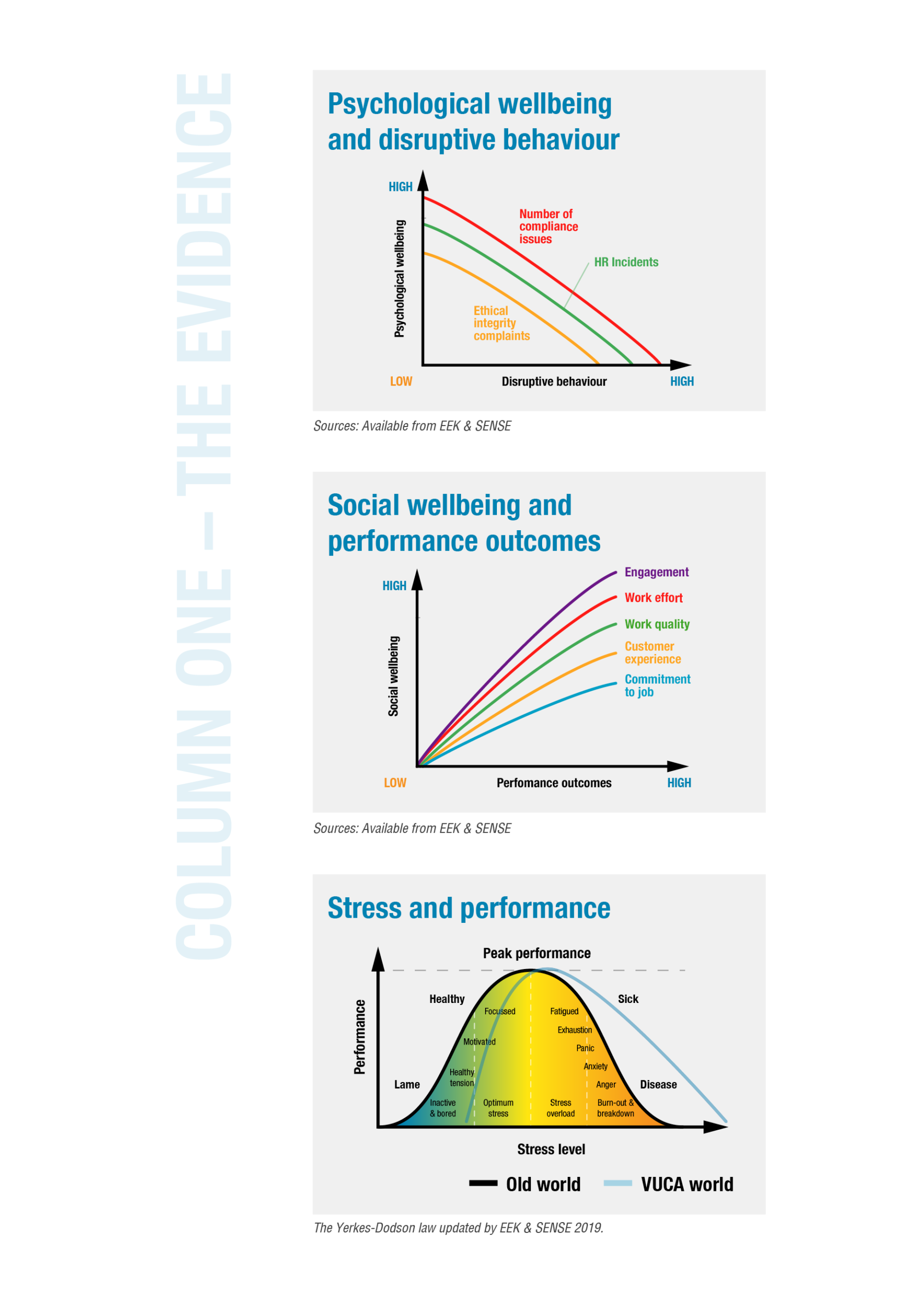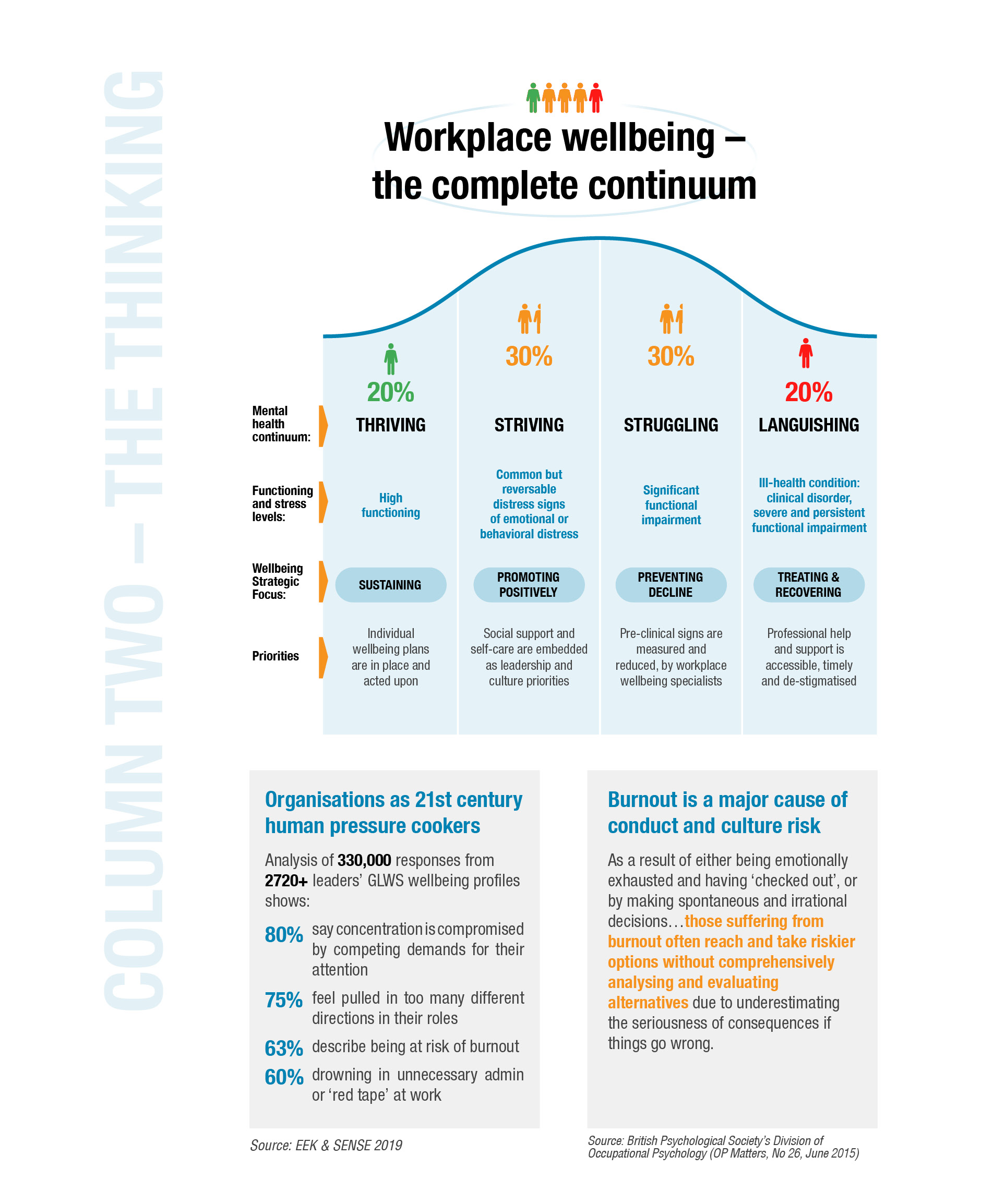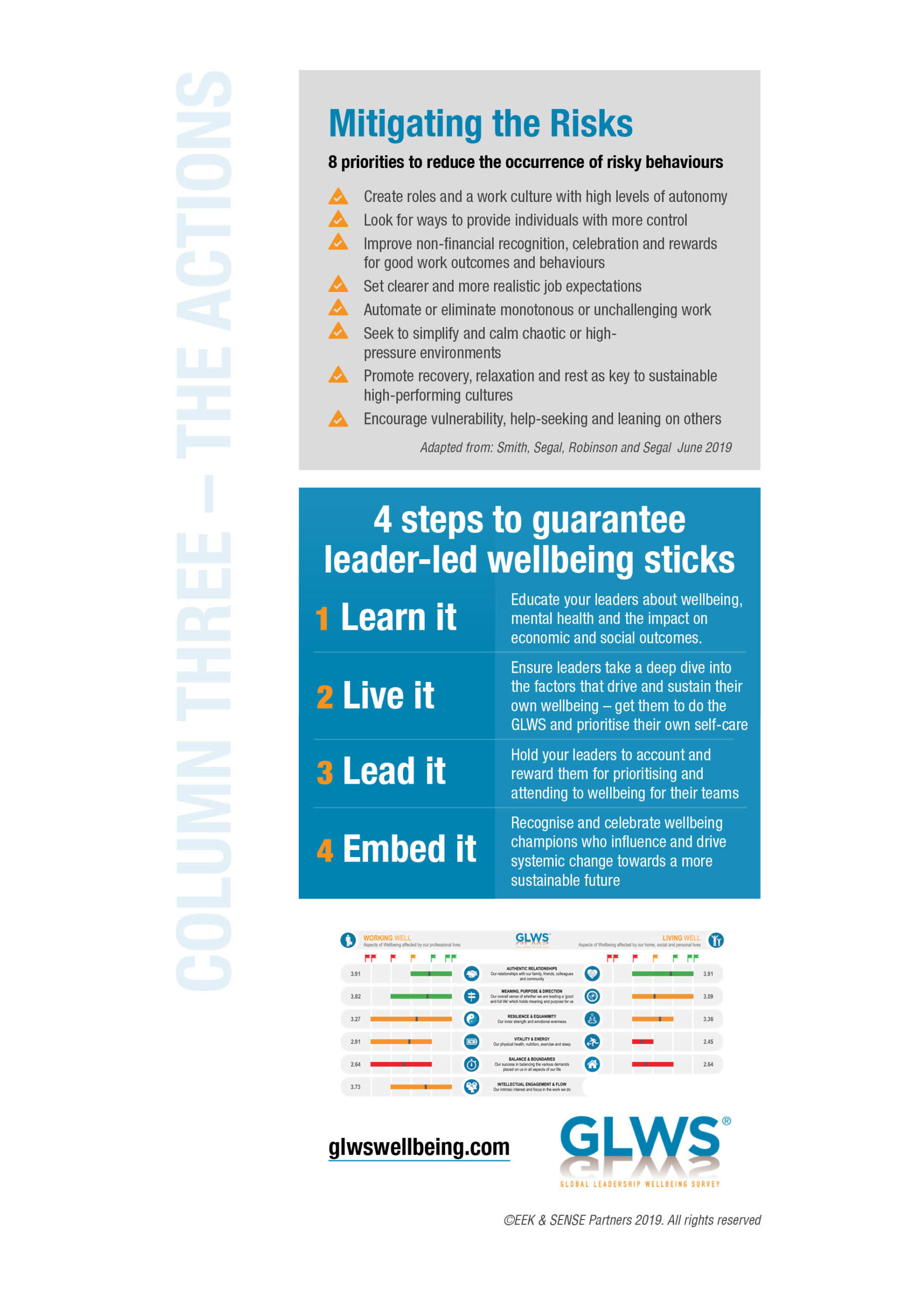The three pillars of building economically and socially thriving organisations
The three pillars of building economically and socially thriving organisations
Our ‘building economically and socially thriving organisations’ infographic has been a runaway hit with those who saw it in our last edition of Wellbeing Insights.
So for this article, I’ll split up the three columns of the graphic and focus on each individually. The columns, you may have realised, represent different aspects of this issue:
Column one – the evidence
The case for psychological and social wellbeing and the growing body of evidence supporting their relevance as both cause and effect of thriving humans and organisations across almost any performance variable – engagement, productivity, culture, ethics, stress levels, complaints.
(Don’t forget to download a PDF of the full infographic here)
Column two – the thinking
Our adaptation of the seminal work by Keyes on the complete mental health continuum as we see it applying to the mental health and wellbeing conversations which seem to be alive across almost every organisation today. The central thrust in any reference to this model must be surely be around the importance and ROI of doing more in the prevention space for 5 key reasons:
- On any given day, only one in five employees might be deemed to be ‘thriving’. Put another way, a frightening 80% of the working population will be experiencing at least one clinical symptom of mental ill-health.
- More and better support is needed for all those employees (who represent the majority of ‘striving’ or ‘struggling’) who are symptomatic of being ‘at risk’ of burnout, mental ill-health or low wellbeing. This requires strong leadership and good management to ‘positively promote’ and facilitate a leadership culture where social support and early help-seeking are priorities.
- Professional workplace wellbeing specialists with deep expertise in building organisational resilience though improved psychosocial factors, organisational development and job and culture design should be among any leadership team’s closest advisers in order to prevent further decline and functional impairment and to ensure that behavioural and emotional distress as a result of suboptimal systems and practices is alleviated.
- Our GLWS research shows clearly that the lived experience of most senior professionals and leaders in today’s work environments is describing something akin to being a ‘human pressure cooker’ (see the stats on the graphic), and;
- Burnout is strongly related to heightened conduct and culture risks. It stands to reason that people who have endured beyond the point of being able to function properly; beyond the point of exhaustion and irritability; past the point of caring and reaching the stage of feeling detached and empty are more likely to behave in ways detrimental to the business and those around them – in ways that are utterly out of character during better times.
Finally, as our model shows, we mustn’t forget or neglect those most vulnerable – the 1 in 5 who are ‘languishing’ as a result of mental ill-health and being psychologically or socially unwell, for whom support, recovery and return to work is both a commercial and humanistic imperative.
The bottom line is that we need to help leaders and employees view wellbeing and mental health as being on a continuum that is relevant for absolutely every employee, transcending hierarchy, position, gender, generational and age differences.
Wellbeing is not only of relevance to those who are struggling, it’s a matter for the whole organisation.
(Don’t forget to download a PDF of the full infographic here)
Column three – the actions
This is all about the path ahead – a path that’s becoming clearer and more easily navigated the more experience and success stories we clock up between us.
When we reflect on what’s worked in the organisations where GLWS has been successfully deployed, we can see now four distinct stages for executing on helping wellbeing take pride of place as a key factor in the organisation’s priorities.
- Learn it! Looking back, we realise we get nowhere fast if we are tempted to skip over the foundational piece: educating leaders and practitioners around the importance of wellbeing as a driver of being able to thrive, both individually and collectively. We need to debunk some of the myths around mental health and educate leaders on the similarities and differences between mental health and wellbeing, and how these belong every bit as much (if not more) with business leaders as they do with HR or OHS. Our advice? Schedule in a 60-90 minute teach piece, keynote, a seminar or workshop at least once for every leadership team you are part of. It’ll start the ball rolling nicely. Speak to us if you need some ideas or content!
- Live it! As our strategic partner Martine Beaumont from Select Wellness put it in an earlier blog this year: “Leading wellbeing begins with the individual. It is only through leaders learning (through the GLWS survey and Personal Report debrief and coaching) how to manage their own wellbeing that they can genuinely ‘walk the walk’ and model healthy behaviours to their teams. Once leaders have a lived experience of the benefits of managing their wellbeing they are then better equipped to actively encourage healthy work practices and embed wellbeing in their teams.”
- Lead it! Engaging the organisation’s leaders to promote and support a culture of wellbeing and to prioritise this as a key focus area becomes an almost inevitable consequence of the first two steps in our approach to executing on a wellbeing push. There are a few options to consider once steps one and two have been completed. You could bring the leaders back together again for another 60-90 minutes to invite their participation in customising KPIs for your organisation. Avid fans may recall we have already developed a Leadership Capability called ‘Enabling Wellbeing’, which is fully defined with a set of comprehensive indicators around self-care, other-care, and leadership of a business. Also, watch this space for a brand-new series of customised wellbeing workshops available for roll-out to a broader staff cohort, without requiring use of the GLWS survey. More on that next year!
- Embed It! This is all about making systemic change stick. To do this, our learning is that we need to create a ‘sponsorship spine’ from the very top to the very bottom of the organisation, inviting participation from key influencers and all those with a passion for wellbeing. Human-centred design principles have proven invaluable in generating actionable ideas for improvement, high levels of energy and building commitment to the wellbeing cause. From one such experience earlier this year we identified a need and a want from client organisations for a GLWS-based app – one that would enable leaders to cascade a shared language and approach to building wellbeing using our GLWS domains. Lots to watch out for next year!
(Don’t forget to download a PDF of the full infographic here)
See the GLWS™ in action now with a suite of sample reports
If you are a leader, or a coach working with leaders, you can find out how the GLWS works in practice by reviewing our suite of reports. Sign up here to get instant access.



